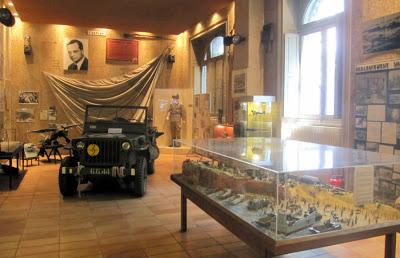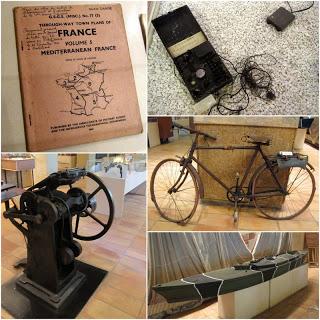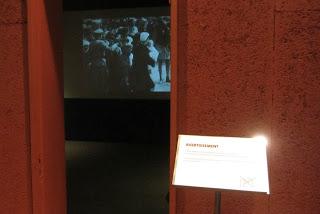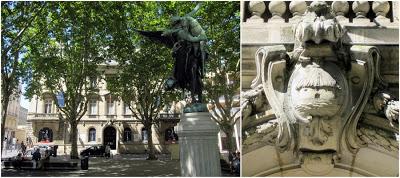 Centre National Jean Moulin is a compact museum devoted to the Second World War that, despite its central location on Place Jean-Moulin, just off Place Pey-Berland, doesn’t always make it on to the list of to-see places for locals, let alone tourists.
Centre National Jean Moulin is a compact museum devoted to the Second World War that, despite its central location on Place Jean-Moulin, just off Place Pey-Berland, doesn’t always make it on to the list of to-see places for locals, let alone tourists. The center was created in 1967 under the aegis of the then mayor of Bordeaux, Jacques Chaban-Delmas. Since 1981, it has been housed in what used to be the premises of the Caisse d’Épargne bank, whose teams have since moved on to the Mériadeck quarter… and are soon set to move again to new quarters on the Garonne waterfront.
The museum building and, above the entrance, a beehive harks back to its previous incarnation and regional head office of the Caisse d'Épargne bank.
The center was given the name of Jean Moulin in reference to a member of the French Resistance. Jean Moulin was born in 1899 and went on to become France’s youngest departmental “prefect”, as well as an accomplished artist and sportsman. In occupied France and relinquished of his State responsibilities, Moulin fled to London in June 1940, ahead of being parachuted back into Provence in January 1942. His assignment was to coordinate the Resistance movement and organize a secret army. He was arrested by the Germans in June 1943 and died during his transfer to Germany. In 1964 his ashes were transferred to the “Panthéon” in Paris, alongside the remains of France’s other “grands hommes et femmes”.
The Jean Moulin museum is home to a vast collection of World War Two items, artefacts and documents. These include numerous posters, leaflets, uniforms, Allied forces objects such as bicycles and a jeep, clandestine printing equipment, flags, signs, weaponry and rudimentary communications equipment. One of the centrepieces of the exhibition is a replica of a Mark II Cockle canoe, like those used by the “Cockleshell heroes” of the 1941 Operation Frankton raid on Bordeaux.

Some of the objects on display including the Operation Frankton replica canoe, bottom right.
On the upper levels of the building, temporary exhibitions take place; notable recent shows include sketches capturing scenes of war by the Spanish artist Francisco Goya, whose links with Bordeaux have already been documented on the blog. In a dedicated room, a video documentary about the Second World War is played on continuous loop and makes for disturbing and thought-provoking viewing. And, behind closed doors, an extensive library of archive documents is available upon request for students, researchers and historians.
The entrance to the harrowing video exhibit.
The museum is a remarkable place to visit although not without its shortcomings. There is no set visitor itinerary, it is difficult to grasp any sense of theme or chronology, many exhibits are on display with little or no explanation of what they represent, and throughout much of the visit the overriding sensation is that of being slightly overwhelmed by a challenging onslaught of objects and information.Don’t let this put you off though; when you’ve viewed the other essentials on Place Pey-Berland (Saint-André cathedral, Pey-Berland tower, the city hall Palais Rohan and the recently-installed statue of Jacques Chaban-Delmas), do take time out to push open the doors of Centre Jean Moulin and travel back in time to 1939-1945, a period which proved pivotal for France, Europe and the world at large.
- Find it: Place Jean-Moulin, Bordeaux
- Open Tuesday-Sunday afternoons from 2pm to 6pm. Closed on Mondays and public holidays. Admission is free of charge.

